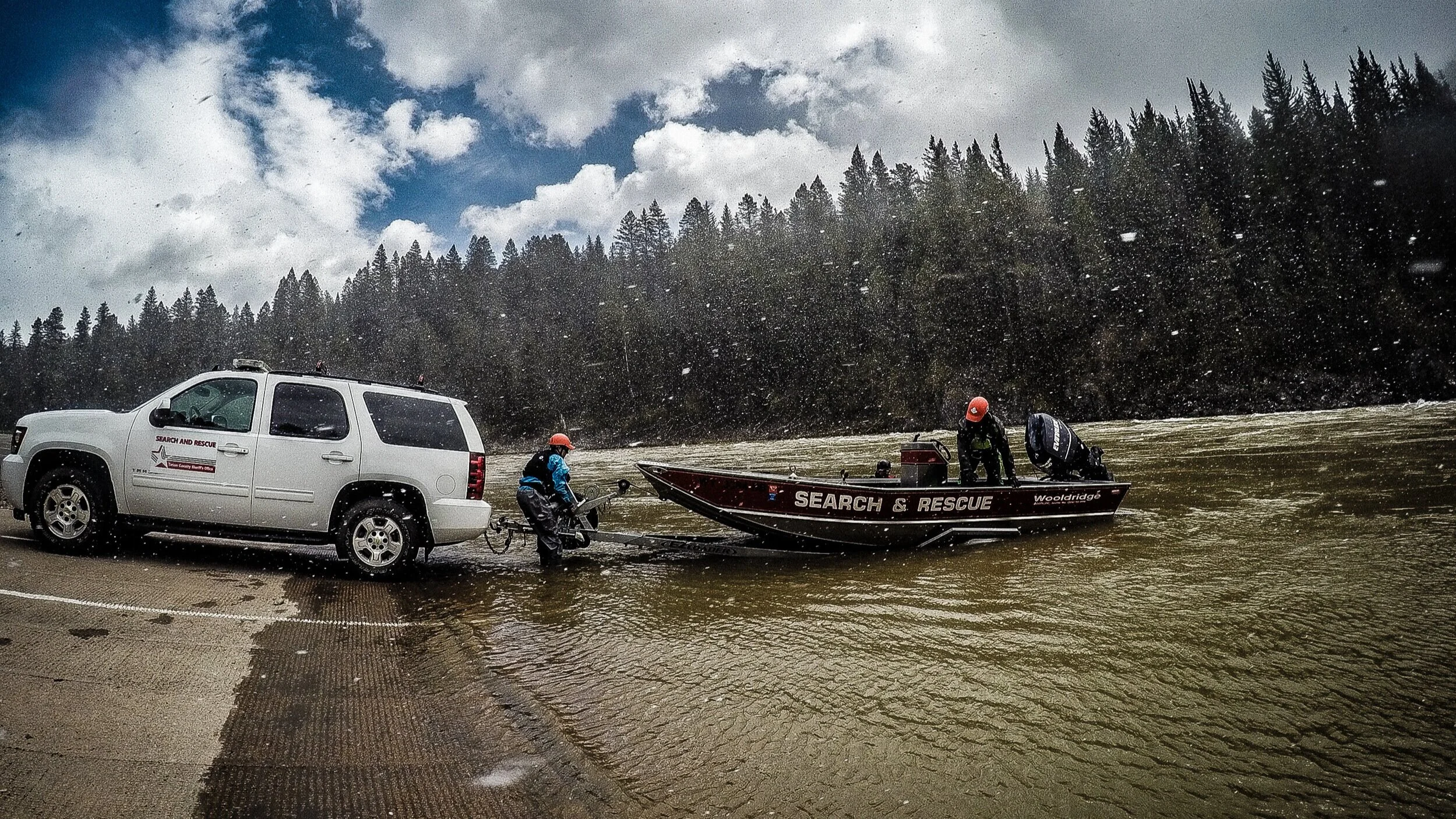During Old Bill's Giving Season, your support for TCSAR volunteers helps keep the backcountry safe
Walking through the TCSAR hangar, one can't help but be enthralled by the jet boats, snowmobiles, a Side-by-Side, Incident Command trucks, and, for most of the year, a helicopter.
But as much as these machines may seduce our inner zoom-zoom, they each have their own limitations, whether due to topography, mechanical function, or weather. Sometimes, these machines are no match for good old-fashioned boots on the ground. Indeed, the ground-pound is unglamorous and at times unpleasant for those slogging through the mountains, but it forms one of the most essential services from Teton County Search and Rescue.
"The reality is ground-based rescue is the core of what we do," says Eric Helgoth, a TCSAR volunteer since 2004.
The ground response is just one rescue method we are highlighting over the next several weeks, along with the volunteers who orchestrate them as a team to save lives, during the Old Bill's giving season. You can help support these rescues and the team by donating today to the TCSAR Foundation through OldBills.org.
Nearly every rescue mission includes a ground response. When machines get bogged down, boots climb mountains in snow and rain and fog; they wade across swollen creeks, bushwhack through grizzly bear country, and bypass broken bridges. Sometimes, the ground team is on standby; other times, they lead the way.
Helgoth and fellow volunteer Terri Romanowski, who joined the squad in 2001, are two veterans on the team. They have each put in untold hours of pounding the ground, taking time out of their lives to help others in need. They are also highly dedicated volunteers, with Romanowski having one of the top attendance records for incidents (70 percent) and trainings (94 percent).
Terri Romanowski, volunteer since 2001, and Eric Helgoth, volunteer since 2004, are among the most dedicated members of the team. Photo: Morris Weintraub
They've been involved in some of the most strenuous TCSAR missions to date. When a young woman needed serious medical attention deep in the Gros Ventre Wilderness, Romanowski was one of a small group of volunteers who responded to a call-out at 4 a.m. to hike in six miles after weather and rugged terrain shut down both helicopter and ATV access.
Helgoth recalls another incident in the fall when the team had to climb Cody Peak to reach a woman who'd been cliffed-out. From the summit, they rappelled 600 feet down the cliffs to reach the patient.
Each time the crew goes out on a ground mission, they shoulder a 24-hour pack, meaning it has the supplies to help them survive overnight and into the next day. The packs weigh about 30 pounds, depending on the gear for the mission, and include an emergency shelter, food and water, light and fire, medical kit, and warm clothes.
"Ground rescue is important because we don’t always have aircraft evacuation," says Romanowski, who's been a mountain operations emergency dispatcher at Teton Village since 1999. "You have to consider various hazards, such as weather, wildlife, terrain, and your mental and physical capacity. If it's a missing person, you're going to have to cover a large area, and it's essential to get feet on the ground and extra eyes to find clues you can't see from above."
Ground-based rescue includes high-angle response, where machines aren’t always viable. Photo: TCSAR Foundation
If you'd like to help support these efforts, we humbly ask for you to consider making a donation to TCSAR Foundation through Old Bill's. This is the best time of the year to support TCSAR volunteers, as matching funds from the community help stretch your dollars.
As locals and visitors continue to flee the pandemic into the Teton County backcountry, it's more important than ever for the community to have a healthy and strong TCSAR team. We would be grateful for any and all support.








